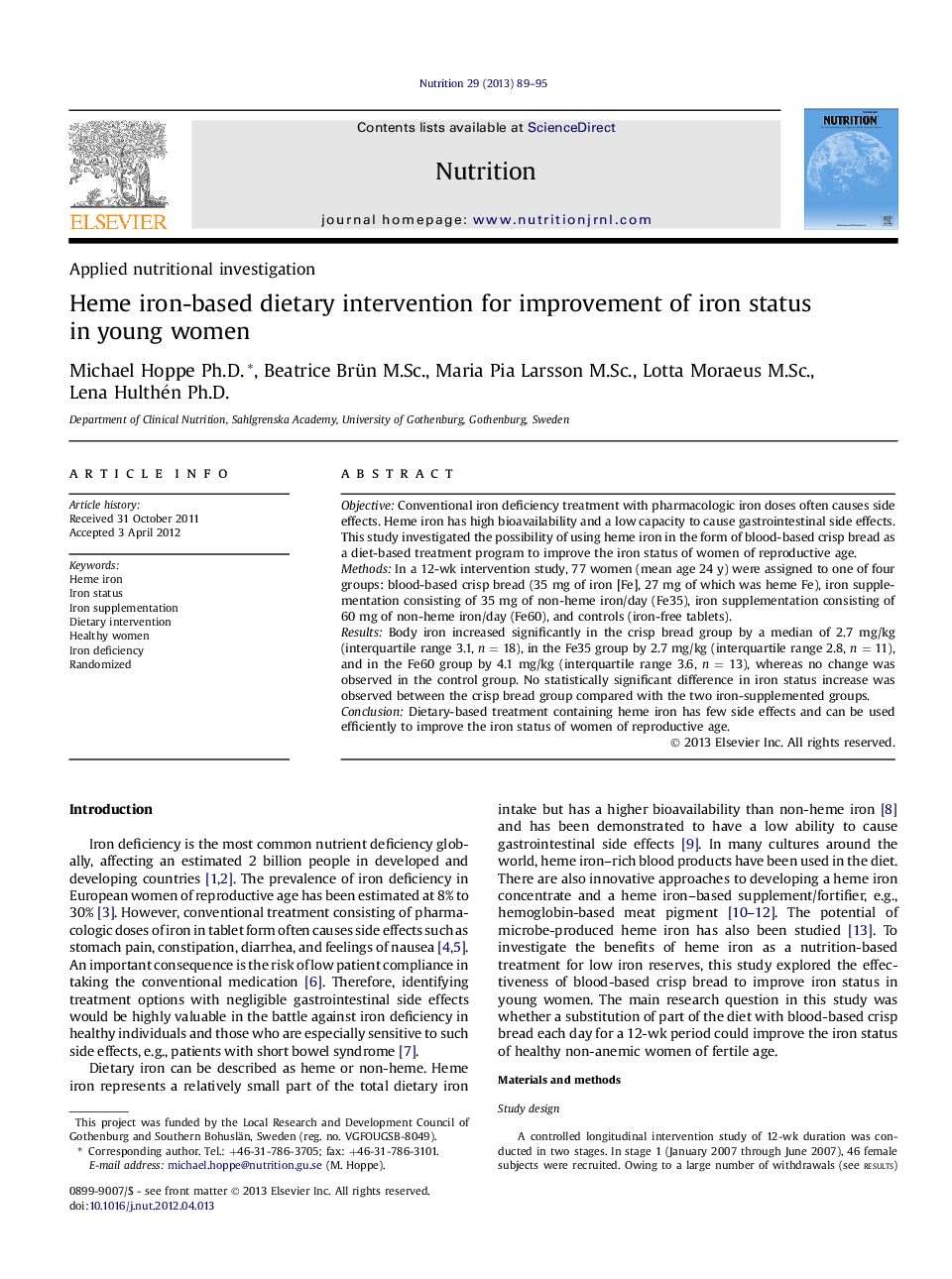| Article ID | Journal | Published Year | Pages | File Type |
|---|---|---|---|---|
| 6090074 | Nutrition | 2013 | 7 Pages |
ObjectiveConventional iron deficiency treatment with pharmacologic iron doses often causes side effects. Heme iron has high bioavailability and a low capacity to cause gastrointestinal side effects. This study investigated the possibility of using heme iron in the form of blood-based crisp bread as a diet-based treatment program to improve the iron status of women of reproductive age.MethodsIn a 12-wk intervention study, 77 women (mean age 24 y) were assigned to one of four groups: blood-based crisp bread (35 mg of iron [Fe], 27 mg of which was heme Fe), iron supplementation consisting of 35 mg of non-heme iron/day (Fe35), iron supplementation consisting of 60Â mg of non-heme iron/day (Fe60), and controls (iron-free tablets).ResultsBody iron increased significantly in the crisp bread group by a median of 2.7 mg/kg (interquartile range 3.1, n = 18), in the Fe35 group by 2.7 mg/kg (interquartile range 2.8, n = 11), and in the Fe60 group by 4.1 mg/kg (interquartile range 3.6, n = 13), whereas no change was observed in the control group. No statistically significant difference in iron status increase was observed between the crisp bread group compared with the two iron-supplemented groups.ConclusionDietary-based treatment containing heme iron has few side effects and can be used efficiently to improve the iron status of women of reproductive age.
